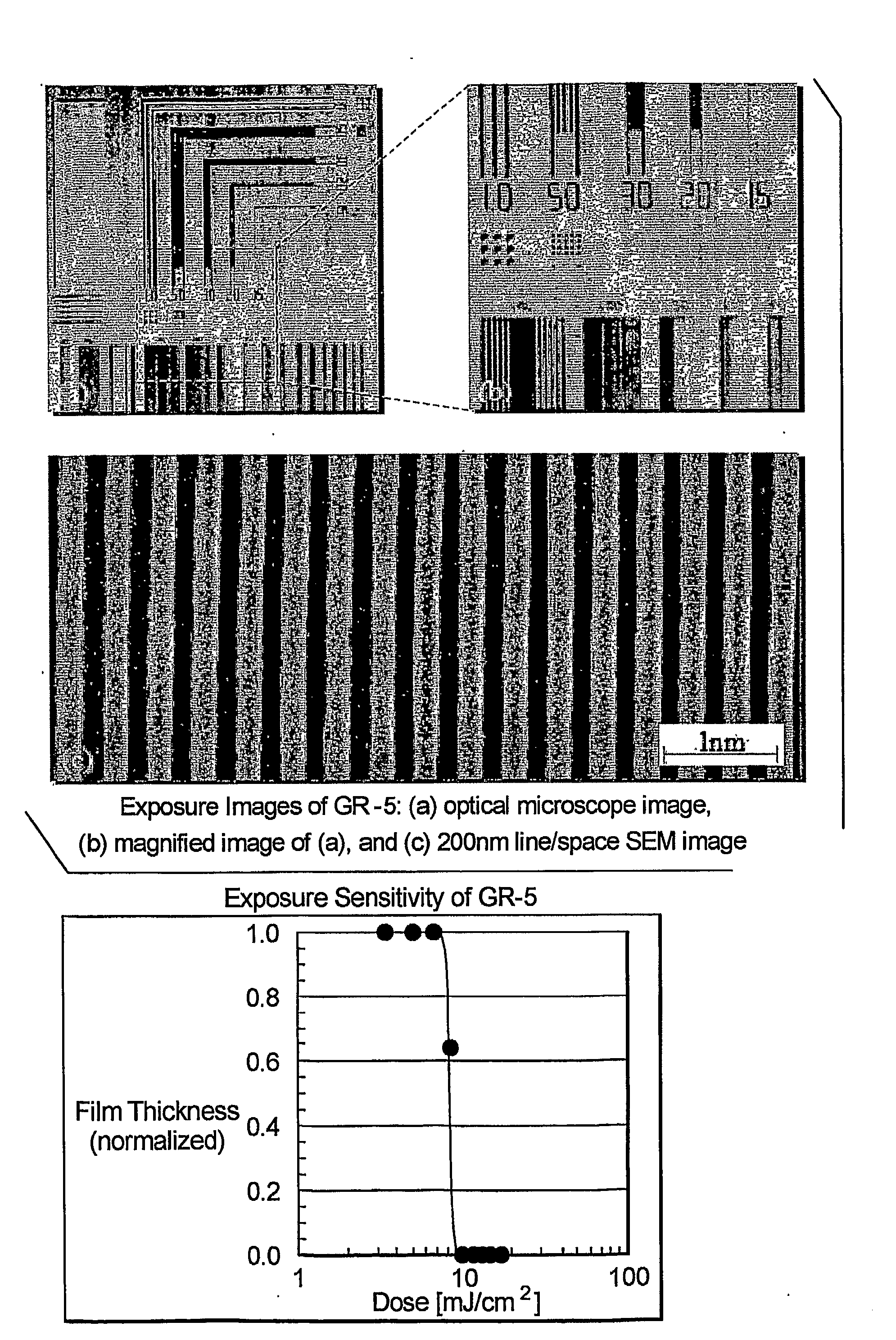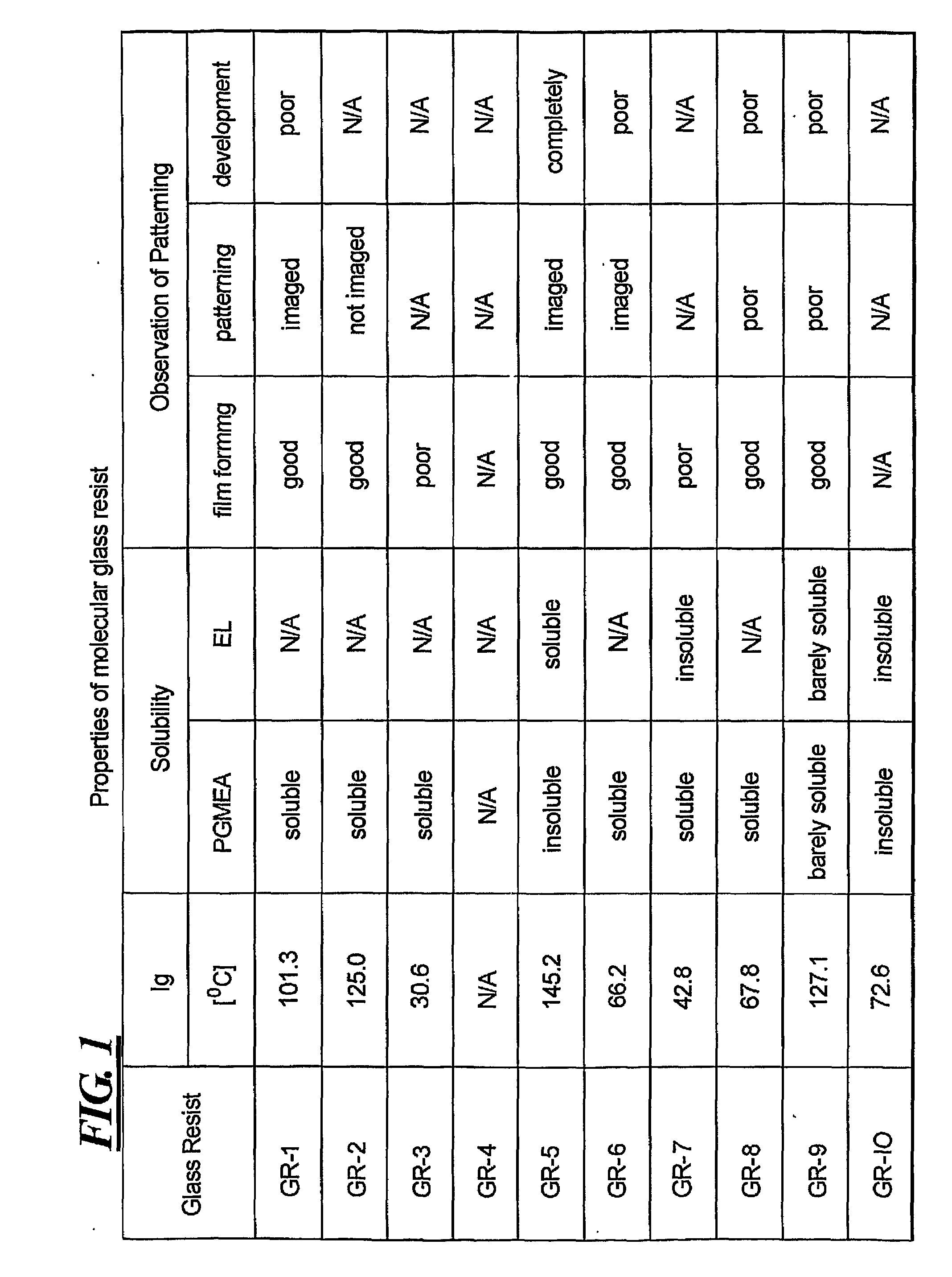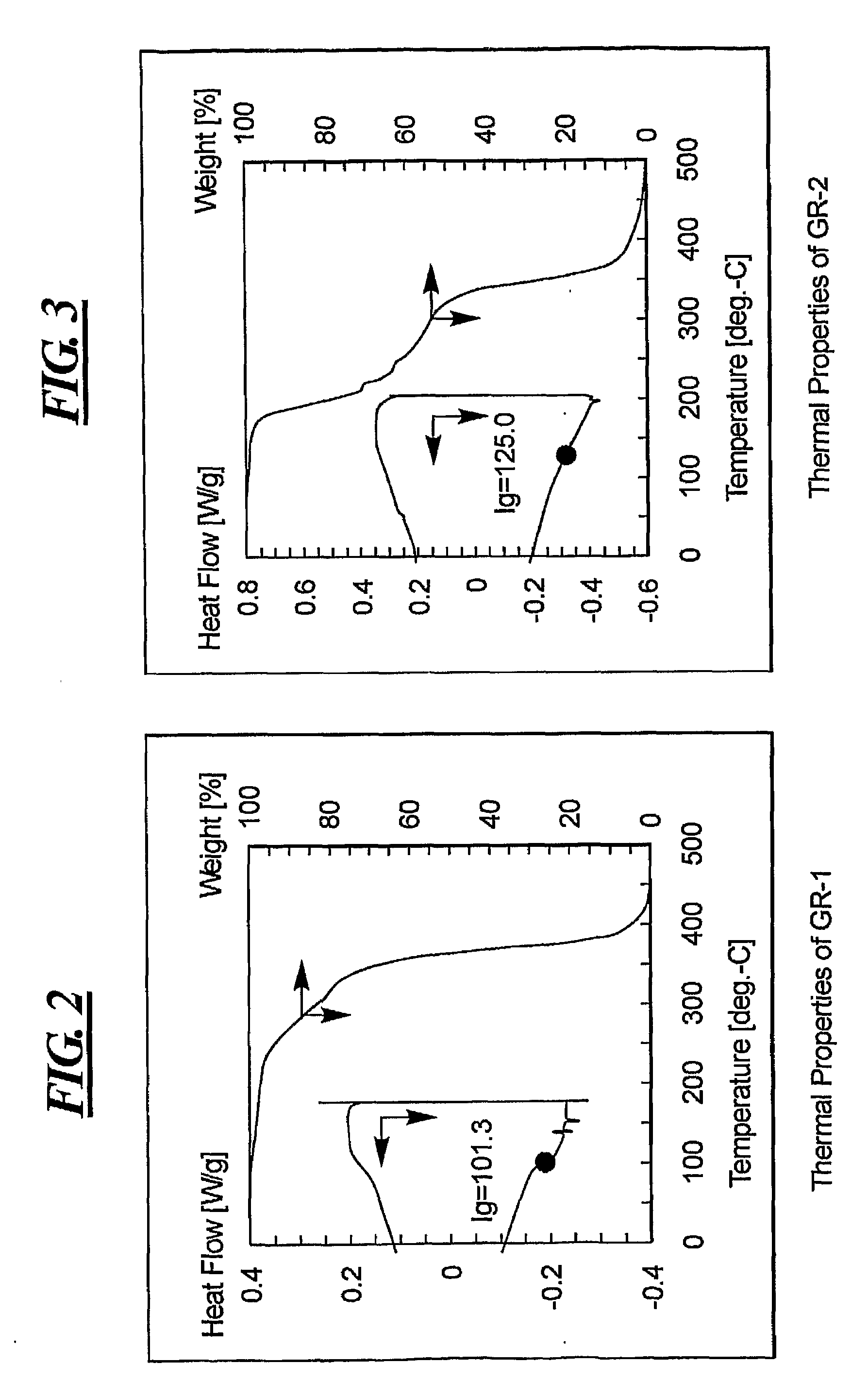Adamantane Based Molecular Glass Photoresists for Sub-200 Nm Lithography
a technology of molecular glass and lithography, applied in the field of adamantane based molecular glass photoresists for sub-200 nm lithography, can solve the problems of inability to meet the requirements of sub-200 nm exposure,
- Summary
- Abstract
- Description
- Claims
- Application Information
AI Technical Summary
Benefits of technology
Problems solved by technology
Method used
Image
Examples
Embodiment Construction
[0033]The disclosure related to low molecular weight photoresist materials that form stable glasses above room temperature. The disclosed photoresists offer several advantages over traditional linear polymers as patterning feature size decreases. First, the disclosed materials are amorphous and have low molecular weight. As a result, they are free from chain entanglements. Because the disclosed materials have smaller molecular sizes and higher densities of sterically congested peripheral molecules, the disclosed photoresists are expected to reduce the variations in line width roughness (LWR) and line edge roughness (LER) at smaller design dimensions.
[0034]In addition, the small uniform molecular size offers excellent processability, flexibility, transparency and uniform dissolution properties. Any photoresist material used for 193 nm or immersion 193 nm exposures must have high plasma-etch resistance and superior optical as well as materials properties for improved lithographic perf...
PUM
| Property | Measurement | Unit |
|---|---|---|
| Wavelength | aaaaa | aaaaa |
| Wavelength | aaaaa | aaaaa |
| Structure | aaaaa | aaaaa |
Abstract
Description
Claims
Application Information
 Login to View More
Login to View More - R&D
- Intellectual Property
- Life Sciences
- Materials
- Tech Scout
- Unparalleled Data Quality
- Higher Quality Content
- 60% Fewer Hallucinations
Browse by: Latest US Patents, China's latest patents, Technical Efficacy Thesaurus, Application Domain, Technology Topic, Popular Technical Reports.
© 2025 PatSnap. All rights reserved.Legal|Privacy policy|Modern Slavery Act Transparency Statement|Sitemap|About US| Contact US: help@patsnap.com



